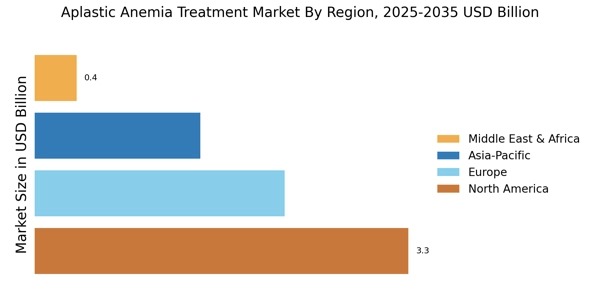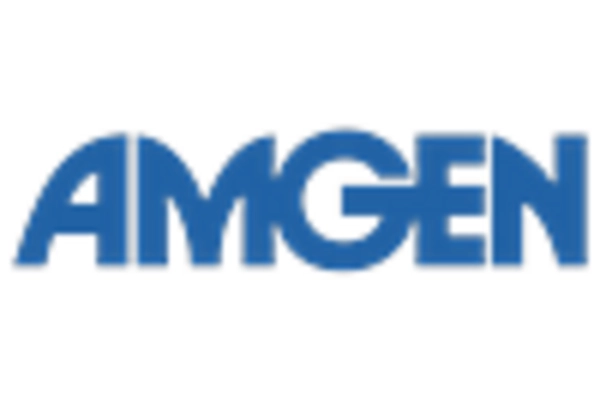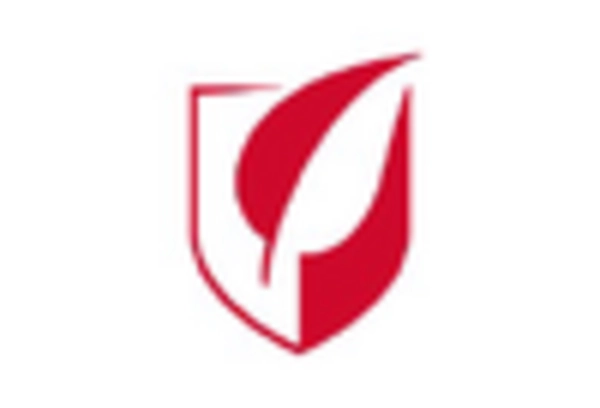Advancements in Treatment Modalities
Innovations in treatment modalities are significantly influencing the Aplastic Anemia Treatment Market. Recent advancements in immunosuppressive therapies and hematopoietic stem cell transplantation have shown promising results in improving patient outcomes. For instance, the introduction of novel immunosuppressive agents has enhanced the efficacy of treatment regimens, leading to higher response rates among patients. Additionally, the development of targeted therapies, which focus on specific pathways involved in the disease, is gaining traction. These advancements not only improve survival rates but also reduce the burden of side effects associated with traditional treatments. As a result, the market is witnessing an influx of new therapies, which could potentially reshape treatment paradigms and expand the available options for patients.
Increasing Incidence of Aplastic Anemia
The rising incidence of aplastic anemia is a pivotal driver for the Aplastic Anemia Treatment Market. Recent data indicates that the prevalence of this condition is on the rise, with estimates suggesting that it affects approximately 2 to 5 individuals per million annually. This increase in cases necessitates a corresponding growth in treatment options, thereby propelling the market forward. As healthcare systems become more adept at diagnosing aplastic anemia, the demand for effective therapies is likely to escalate. Furthermore, the aging population, which is more susceptible to various hematological disorders, contributes to the growing patient pool. Consequently, pharmaceutical companies are investing in research and development to create innovative treatments, which may further stimulate market growth.
Regulatory Support and Approval Processes
Regulatory support and streamlined approval processes are emerging as significant drivers in the Aplastic Anemia Treatment Market. Regulatory agencies are increasingly recognizing the need for expedited pathways for the approval of new therapies, particularly for rare diseases like aplastic anemia. This shift is encouraging pharmaceutical companies to invest in the development of innovative treatments, as the time to market is reduced. Recent initiatives aimed at facilitating faster approvals for breakthrough therapies are likely to enhance the availability of new treatment options for patients. As regulatory frameworks evolve to support innovation, the market is expected to benefit from a more diverse array of therapies, ultimately improving patient access to effective treatments.
Rising Awareness and Education Initiatives
The increasing awareness and education initiatives surrounding aplastic anemia are playing a crucial role in shaping the Aplastic Anemia Treatment Market. Healthcare organizations and patient advocacy groups are actively working to educate both the public and healthcare professionals about the disease. This heightened awareness is leading to earlier diagnosis and treatment, which is essential for improving patient outcomes. Furthermore, educational campaigns are fostering a better understanding of the disease, its symptoms, and available treatment options. As more individuals become informed about aplastic anemia, the demand for effective therapies is likely to rise. This trend not only benefits patients but also encourages healthcare providers to prioritize research and development efforts in the field.
Growing Investment in Research and Development
The Aplastic Anemia Treatment Market is experiencing a surge in investment directed towards research and development. Pharmaceutical companies are increasingly allocating resources to explore novel therapeutic approaches and improve existing treatment options. This trend is driven by the need for more effective therapies that can address the unmet medical needs of aplastic anemia patients. Recent reports indicate that R&D spending in the hematology sector has seen a notable increase, with several companies focusing on clinical trials for new drugs. This influx of investment is likely to accelerate the pace of innovation, leading to the introduction of groundbreaking therapies that could transform the treatment landscape for aplastic anemia. As new treatments emerge, the market is expected to expand, providing patients with more choices.


















Leave a Comment